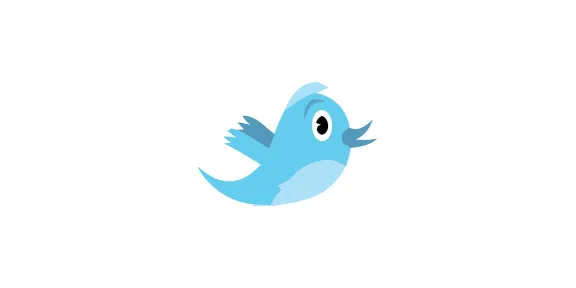
This Date in UCSF History: Time to Join the Twitter Flock?
Originally published in Synapse on May 14, 2009. Endorsed by Oprah, used by Obama, Twitter is an online service that I have known about for some time but hadn’t given a second thought to until recently. It seems that I’m not the only one reevaluating Twitter.
Twitter was founded in 2006, but according to Google Trends, searches for Twitter have been fairly low until they started to increase at an almost exponential rate earlier this year.
The simple concept of broadcasting short, 140-character messages to the web never struck me as a revolutionarily useful idea, so the sudden explosion of headlines about Twitter on the interwebs seemed mysterious.
Is Twitter more than I thought it was? Could it be something that I might actually use? The Twitter website describes the service as a simple way to let “friends, family, and co-workers” know what you are doing.
As several articles about Twitter reference, this gives one the idea that Twitter is used to notify your friends of the (mostly mundane) happenings of your life, notably, what you ate for breakfast. This seems sort of analogous to a chicken boldly announcing that it laid an egg.
Let there be no mistake — I like chickens (and eggs), but I need more than that to entice me into the world of twittering.
At least, this was my skeptical attitude until I found out more about the unofficial rules and philosophy of Twitter. Here’s the gist of what I found: “Twittiquette.”
In a way, conversing on Twitter is not that much different from conversing with a large group of people, and same social etiquette applies.
While one is welcome to “tweet” sweet nothings, broadcasting your choice of a muffin likely will not earn followers, nor would such an announcement garner much interest at a networking reception.
Rather than seeing Twitter as a chance to broadcast yourself, you might find it useful to start by listening in on the thoughts of others, and chime in with useful information when appropriate.
It is worth pointing that that your Twitter profile in its default setting is completely public, which gives it a different dynamic from other online networking websites (like Facebook).
Keep this in mind. Look Beyond Friends While Twitter can be used to keep in touch with friends, it should be recognized that it can be used for much, much more. You can use Twitter to tap into the online consciousness.
What are your interests? Everyone from the Red Cross to Britney Spears and the UCSF Library are on Twitter.
The focus of your Twitter account is what you make of it. You can use it for professional or personal purposes.
A user tweeting poetic short stories that are 140 characters in length might capture your interest, or you might like to keep abreast of the breaking news in your field. Realize that it might take a little bit of digging to find people and topics you’d like to follow.
Get a Twitter Client Let’s face it —if you’re going to Twitter, you should do it right. Don’t rely on the clunky website interface—get a program on your computer that gives you many more options for organizing and filtering the influx of information that you’re going to receive.
There are many applications, but Tweet Deck and Twhirl are two that run on a number of platforms and seem to be more popular.
Twitter as Social Media While one measly chirp from a user might not seem like much, the collective tweets of the masses can make a big impact. In a fairly recent event, many gay and lesbian-themed books on Amazon suddenly lost their search rankings, rendering them difficult to find.
Two days of “Twitterrage” ensued, with users accusing Amazon of censoring literature and being homophobic.
After becoming aware of the backlash, Amazon issued public statements informing the public that a cataloging mistake was responsible for the error.
This gaffe and the following reaction was highlighted by numerous news entities, including the New York Times. I think it’s safe to say that disgruntled emails and office conversations probably would not have received this much attention. Companies are also reaching out to the public through Twitter.
Dominos Pizza recently joined Twitter for damage control purposes after an incident involving errant employees and a YouTube video.
In summary... even if these observations don’t convince you to hop on the Twitter bandwagon, hopefully they serve to illustrate that, when used with the proper “twittiquette” and realistic expectations, this social tool can be about more than trumpeting mundane happenings.



